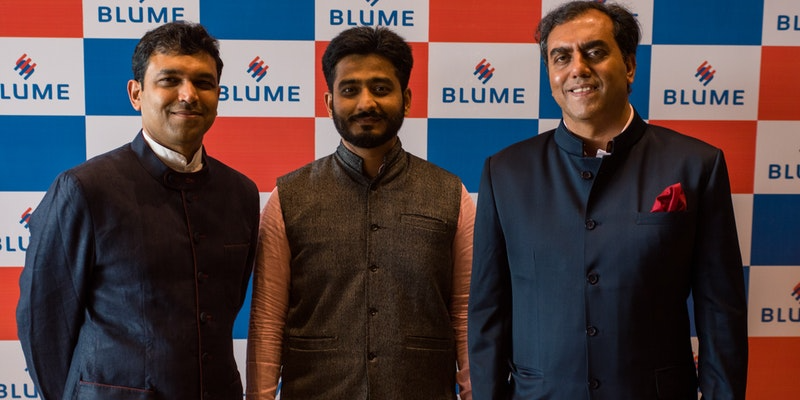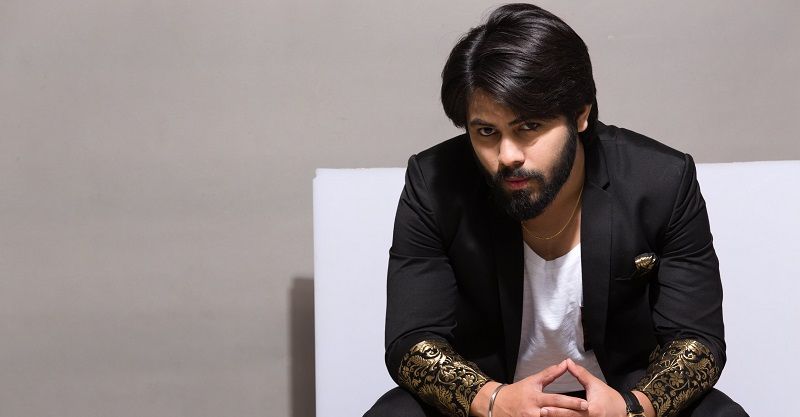'Fundraising for a fund is 10x tougher,' says Sanjay Nath of Blume Ventures
In a conversation with YourStory, Sanjay Nath, Co-founder and Managing Partner of Blume Ventures, speaks about the difficulties in raising funds as a VC firm and what excites him to come to work every day.
In February 2020, homegrown early-stage VC firm Blume Ventures announced the final close of its Fund III at $102 million. Founded by Sanjay Nath and Karthik Reddy in 2011, Blume Ventures started with a fund of Rs 100 crore; in 2016, the fund closed $60 million.
Some of the key investments made by Blume include hyperlocal delivery startup , edtech startup , and robotics startup . The fund has also seen some exits, including , , Minjar, and .
The VC firm had announced the first close of Fund III at $45 million in October 2018.
With this final fund close, Blume becomes the first entirely homegrown fund to raise a third fund and one to raise over a $100 million in a single fund. The fund also has different programmes like Constellation Blu, the financial and legal aid spinoff; Passion Connect, the fund's talent acquisition spinoff; Arka, the B2B x-border accelerator JV with US funds; and Blu Swan, an internal growth capital advisory.

Sanjay Nath, extreme right along with Ashish Fafadia and Karthik Reddy, Blume Ventures
In a conversation with YourStory, Sanjay Nath, Co-founder and Managing Partner, outlined the key purpose of the fund and how the startup ecosystem in India has evolved in the past decade.
Edited excerpts:
YourStory: Tell us what plans you have with Fund III
Sanjay Nath: This fund has been coming sometime. If you look at the first fund it was $15 million into 60 companies; the second one was pre-Series A funding of $60 million in 40-45 companies, and this third fund which is north of $100 million, will be into 30 companies. The focus is on making pre-Series A and Series investments and looking at 10-15 percent stake.
The fund has evolved with the market. For example, the same founders who raised Rs 3 crore to Rs 4 crore in 2010-2011 want to raise a few million dollars now and have a runway for 18 months. Thus, the fund size has to be larger to reflect the new change.
But the challenge is, while you might become larger how do you ensure that your DNA remains the same? How do you retain the agility and founder friendliness of a seed fund? It isn’t just about the investments; it is about how we can help the founder.
YS: What can be expected from Fund III?
SN: It will be an extension of our playbook. In the investment side we saw that earlier it was a broad focus on either B2B or consumer startups. Today, there are segments within these two. The consumption story has played out deeper with Indian language content today, and deep tech has seen evolution in robotics, life sciences, biotech dronetech, spacetech, and autonomous vehicles. There are sub markets and sectors.
Today’s generation looks at problems deeper and wants to solve them and cares about them. They are looking to solve tough problems.
The next decade looks positive for a multiple reasons: the quality of talent, and maturity of the market. There is a strong business confidence in the country.
Fund III will continue to back early-stage startups focusing on the two distinct opportunity sets that India offers: opportunities that leverage the mobile-led explosion of the Indian digital-first economy, and Indian engineering and science translated to global market opportunities.
YS: How is it as an investor to raise funds for a VC fund?
SN: If you talk to most fund managers, they will tell you that fundraising for a fund is 10x tougher than what it is for an entrepreneur.
When you are an entrepreneur you are typically dealing with someone in the business of investing. When you’re raising a fund, you go to anybody with money. They are evaluating you with gold, stock markets, and against ventures in the US and Latin America. You have got to convince them - why India, why venture, why you, why your team. So, there are multiple levels. For startups, it’s comparatively more straightforward.
Also, for the first and second-time funds the investments made are still on paper, as they haven’t shown the returns. The returns start happening only from the third fund.
For Fund I, we did over 600 pitches to get 60 to 70 investors. There wasn’t much awareness as there is today. Having raised the fund as founders, we are very empathetic to what founders do. There is no shortcut.
It is a humbling but fantastic experience.
YS: While most funds are raising capital, there is a push to play it safe. Is Blume viewing the ecosystem cautiously as well?
SN: What we need is more companies becoming profitable, showing scale, and a steady stream of the companies that show exits. When you return money and show exits, it gives you a lot of confidence to experiment.
If we can show a steady stream of exits for the ecosystem, it provides a lot of freedom and confidence.
Profitability and the focus of going deeper today is a global phenomenon. But our VC ecosystem is very cyclical; every year we go through periods of exuberance, with the SoftBanks of the world raising their Vision Fund, and then everyone cuts back.
In 2008, Sequoia had ‘death spiral deck’. Basically, what it said is that the only thing a startup can control is its costs, not its revenues or user base. You can’t predict when a particular sales cycle is going to close, or when another technology will come in.
If you can control costs and build frugally without depending on future fundraises you will build responsibly. Some of the best examples are companies that have never raised capital, like Atlassian and .
We have gone through cycles and now it is back to the roots and fundamentals. The goal of a business is to make money, and a startup is a business. Eventually, as a consumer company, can you create value after seeing significant scale, like WhatsApp? Or will you start monetising and expand?
The bar has to be reset from valuations to revenues and profitability. Monetisation in the Middle East and Southeast Asia is higher than in India, so we are at the tip of the iceberg. India does take time to deliver. There are companies in China that scale much faster. Our business is all about speed: you need to know in six months and not six years.
So, as investors, we are not rushing now. The reason being we have been over-exuberant. Overall valuations have become higher, Softbank stepping back is positive, artificial and inflated valuations will be corrected, and traditional growth investors like General Atlantic are coming back, which is a good sign, as they will be looking at the fundamentals.
YS: What is the best part about investing in Indian startups?
SN: The biggest advantage India has is its talent. I go to cafes in Bengaluru like or Lavonne, and I see high energy. Everyone is talking about startups. Someone is always hiring, raising funds, or holding a mini board meeting.
A VC was telling me that Singapore has everything, and that you can get to anywhere in Singapore in 15 minutes. But it doesn’t have the energy that Bengaluru has. People are coming back from the US. The challenge is to create more steady streams of success stories and exits.
YS: What are the highs and lows of an investor?
SN: I don’t know why but it is very glamorous to be a VC. You are getting into a journey that is will last at least for 10-12 years. It is a partnership and a marriage of sorts.
The reason why we VCs come to work every day is that we are learning with every meeting. You learn from every pitch, learning from people who are both one or two decades younger than you or also sometimes someone older.
You’re betting on best and brightest of India’s youth with the money. That is an exciting hat to wear. India is a market you cannot ignore. It is second after China. And it is open.
Also, as VCs you live vicariously. You look at some of the logos and you feel you are part of the story. You don’t know if the person sitting next to you will build the next . Or .
The tough part of being a VC is facing the moment of truth that your entire performance and future is dependent on a collection of the investments you make.
For investors, there is nothing other than the investments and returns; no goodwill, brand, or extra points for being nice.
You have to be a little thick-skinned for the fights on Twitter and the questions you are not even prepared for. These are long-term bets you have to believe in.
It isn’t like the stock market where you get rich by selling shares. You need to deal with the naysayers who believe India is not going to deliver. You have to make it happen.
(Edited by Evelyn Ratnakumar)













